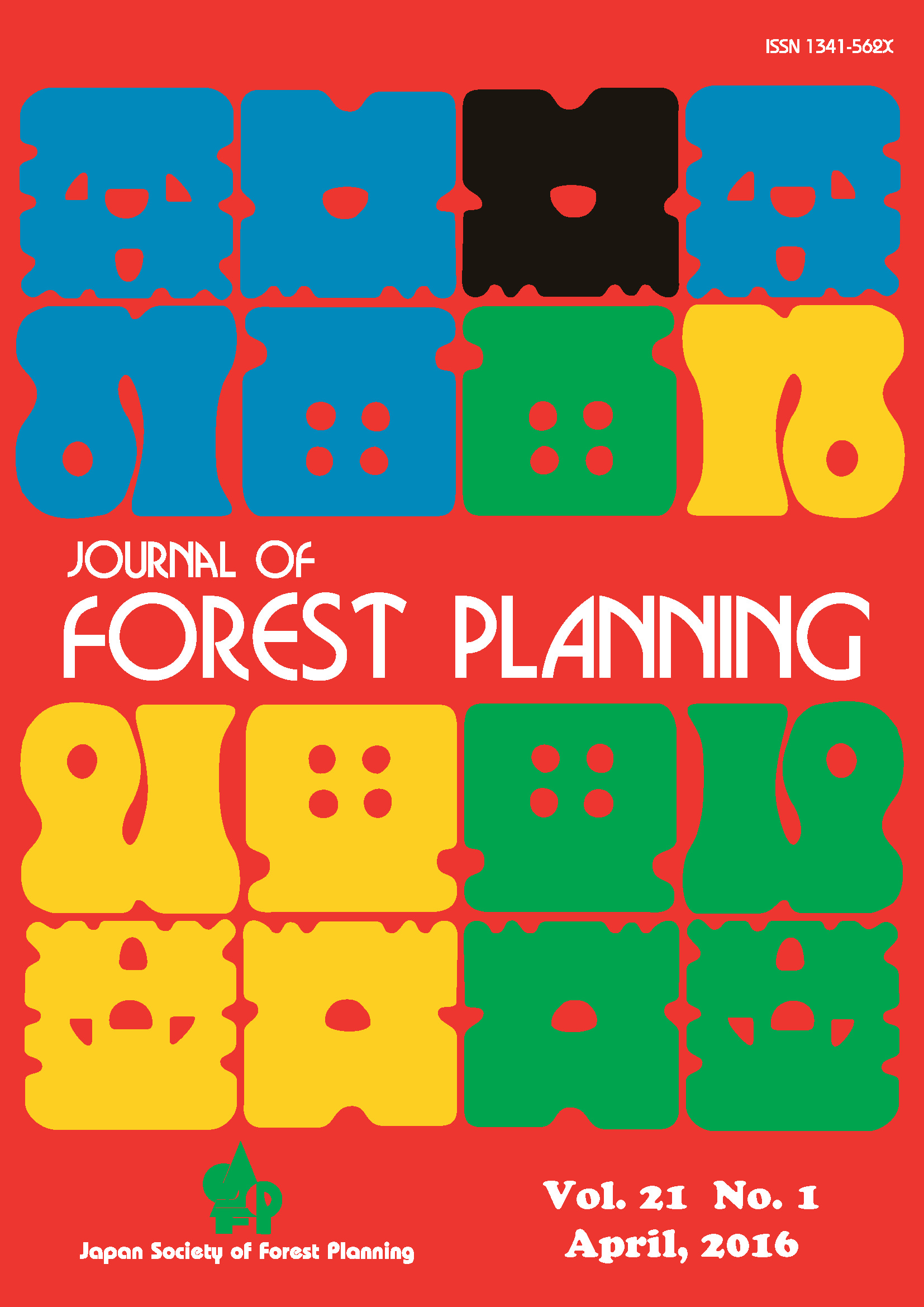All issues

Volume 21 (2016)
- Issue 2 Pages 23-
- Issue 1 Pages 1-
Volume 21, Issue 1
Journal of Forest Planning 21-1
Displaying 1-3 of 3 articles from this issue
- |<
- <
- 1
- >
- >|
Journal of Forest Planning Vol.21 No.1
-
2016Volume 21Issue 1 Pages Cont-
Published: 2016
Released on J-STAGE: September 20, 2018
JOURNAL FREE ACCESSDownload PDF (70K) -
Takaharu Mochizuki, Hiromi Mizunaga2016Volume 21Issue 1 Pages 1-11
Published: 2016
Released on J-STAGE: April 12, 2018
JOURNAL FREE ACCESSFoliage estimation from laser scanning data has limitations caused by the occluded space of beams in a canopy and high cost of the scanning. We focused on twigs supporting leaves, and developed an estimation method for three-dimensional foliage distribution with low-cost laser scanning under leafless conditions. To validate the scanning method, we used the method for the canopy of a secondary Fagus crenata forest and applied a contact point quadrat method to the canopy. Vertical leaf distribution from scanning during leafless season was very similar to that of the contact method, and the three-dimensional leaf distribution from the scanning showed a smooth trend of leaf area density within a canopy volume of 1.8 × 1.8 × 0.6 m3. These results were caused by the smaller proportion of occluded space and substantial reduction of estimation error per beam length. We can reduce the cost of our scanning system because of its minimal requirements. The concept of scanning during leafless season might have the potential to contribute to scanning with a high-resolution scanner by complementing the occluded space in an existing foliage estimation method using our estimation method.View full abstractDownload PDF (3463K) -
Keiko Nagashima, Yukihiko Kinami, Kazuhiro Tanaka2016Volume 21Issue 1 Pages 13-20
Published: 2016
Released on J-STAGE: April 12, 2018
JOURNAL FREE ACCESSThe goal of our study was to separate managed and unmanaged bamboo (Phyllostachys pubescens) forests based on the height and density of bamboo stems using LiDAR data. Based on 95% confidence intervals of the height of managed and unmanaged bamboo obtained during field surveys, stem height was classified as either “managed stem zone,”“transitional zone,”or “unmanaged stem zone.”Using the digital canopy height model (DCHM, mesh size = 1.0 m) obtained from the LiDAR data for these three zones, bamboo forests successfully classified to “managed forests”, “extensively managed forests”and “unmanaged forests”. Density analysis was conducted using the marker-controlled watershed segmentation algorithm utilizing treetops obtained using the local maxima detection method (LM) with a circular window with a 1.0-m radius. Stem number obtained through LiDAR was compared to that obtained during field surveys by calculating the extraction rate. Stem numbers were underestimated in every management status category; with an increase in stem density, crown size decreased, which eventually lead to a low extraction rate. Because the estimated crown size of managed and unmanaged stems were approximately 1.0 m and 0.8 m, respectively, the DCHM with mesh size 0.5 m and a circular window size for LM with <1.0 m radius are required to classify the bamboo forest based on their management status.View full abstractDownload PDF (2473K)
- |<
- <
- 1
- >
- >|